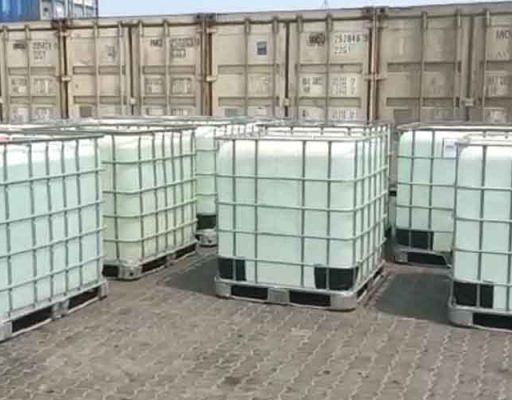Ethylene glycol is a colorless, practically odorless, low-volatility, low-viscosity, hygroscopic liquid. It is completely miscible with water and many organic liquids. Ethylene glycol is produced from ethylene, via the intermediate ethylene oxide. Ethylene oxide reacts with water to produce ethylene glycol. Ethylene glycol (Monoethylene Glycol) in its pure form, it is an odorless, colorless, syrupy liquid with a sweet taste.
The hydroxyl groups on glycols undergo the usual alcohol chemistry, giving a wide variety of possible derivatives. Hydroxyls can be converted to aldehydes, alkyl halides, amines, azides, carboxylic acids, ethers, mercaptans, nitrate esters, nitriles, nitrite esters, organic esters, peroxides, phosphate esters and sulfate esters.
This chemistry permits ethylene glycol to act as an intermediate in a wide range of reactions. Especially significant is resin formation, including the condensation with dimethyl terephthalate or terephthalic acid resulting in a polyester resin. The reactivity and solubility of ethylene glycol provide the basis for many applications. The widespread use of ethylene glycol as an antifreeze is based on its ability to lower the freezing point when mixed with water. The physical properties of ethylene glycol-water mixtures are therefore extremely important. The end uses for ethylene glycol are numerous.
Monoethylene glycol (MEG) is an important raw material for industrial applications. A primary use of MEG is in the manufacture of polyester (PET) resins, films and fibers. In addition, MEG is important in the production of antifreezes, coolants, aircraft anti-icer and deicers and solvents.
MEG is a basic building block used for applications that require:
- Chemical intermediates for resins
- Solvent couplers
- Freezing point depression solvents
- Humectants and chemical intermediates
The major use of ethylene glycol is as a medium for convective heat transfer in, for example, automobiles and liquid-cooled computers. Ethylene glycol is also commonly used in chilled-water air-conditioning systems that place either the chiller or air handlers outside, or systems that must cool below the freezing temperature of water. In geothermal heating/cooling systems, ethylene glycol is the fluid that transports heat through the use of a geothermal heat pump.
Pure ethylene glycol freezes at about −12 °C (10.4 °F) but, when mixed with water, the mixture freezes at a lower temperature. For example, a mixture of 60% ethylene glycol and 40% water freezes at −45 °C (−49 °F). Because of the depressed freezing temperatures, ethylene glycol is used as a de-icing fluid for windshields and aircraft, as an antifreeze in automobile engines, and as a component of vitrification (anticrystallization) mixtures for low-temperature preservation of biological tissues and organs. Mixture of ethylene glycol and water can also be chemically termed as glycol concentrate/compound/mixture/solution.
These applications are vital to the manufacture of a wide variety of products, including:
- Resins
- Deicing fluids
- Heat transfer fluids
- Automotive antifreeze and coolants
- Water-based adhesives
- Latex paints and asphalt emulsions
- Electrolytic capacitors
- Textile fibers
- Paper
- Leather
